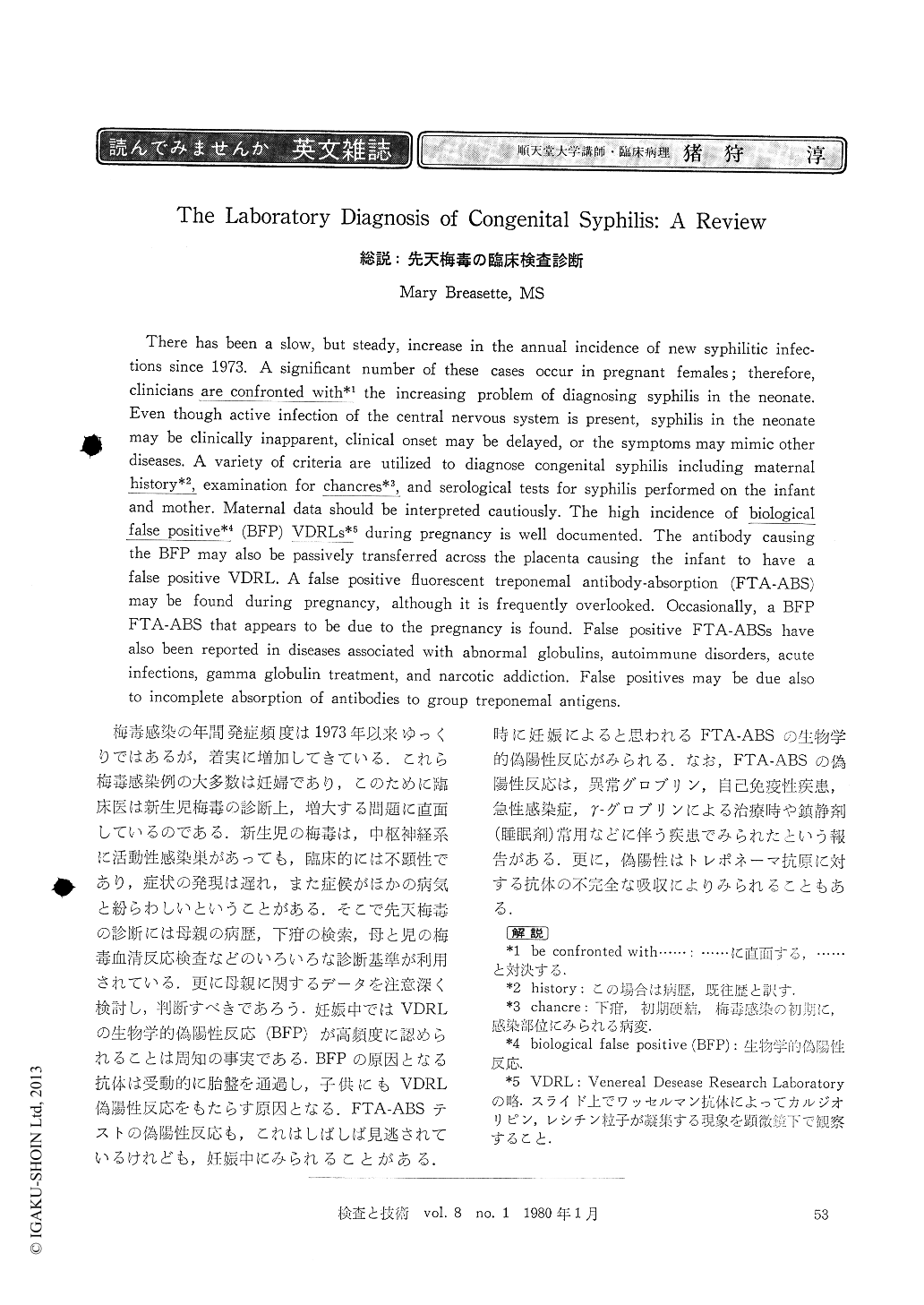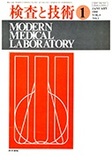Japanese
English
- 有料閲覧
- Abstract 文献概要
- 1ページ目 Look Inside
梅毒感染の年間発症頻度は1973年以来ゆっくりではあるが,着実に増加してきている.これら梅毒感染例の大多数は妊婦であり,このために臨床医は新生児梅毒の診断上,増大する問題に直面しているのである.新生児の梅毒は,中枢神経系に活動性感染巣があっても,臨床的には不顕性であり,症状の発現は遅れ,また症候がほかの病気と紛らわしいということがある.そこで先天梅毒の診断には母親の病歴,下疳の検索,母と児の梅毒血清反応検査などのいろいろな診断基準が利用されている.更に母親に関するデータを注意深く検討し,判断すべきであろう.妊娠中ではVDRLの生物学的偽陽性反応(BFP)が高頻度に認められることは周知の事実である.BFPの原因となる抗体は受動的に胎盤を通過し,子供にもVDRL偽陽性反応をもたらす原因となる.FTA-ABSテストの偽陽性反応も,これはしばしば見逃されているけれども,妊娠中にみられることがある.時に妊娠によると思われるFTA-ABSの生物学的偽陽性反応がみられる.なお,FTA-ABSの偽陽性反応は,異常グロブリン,自己免疫性疾患,急性感染症,γ-グロブリンによる治療時や鎮静剤(睡眠剤)常用などに伴う疾患でみられたという報告がある.更に,偽陽性はトレポネーマ抗原に対する抗体の不完全な吸収によりみられることもある.
There has been a slow, but steady, increase in the annual incidence of new syphilitic infections since 1973. A significant number of these cases occur in pregnant females ; therefore, clinicians are confronted with*1 the increasing problem of diagnosing syphilis in the neonate. Even though active infection of the central nervous system is present, syphilis in the neonate may be clinically inapparent, clinical onset may be delayed, or the symptoms may mimic other diseases. A variety of criteria are utilized to diagnose congenital syphilis including maternal history*2, examination for chancres*3, and serological tests for syphilis performed on the infant and mother. Maternal data should be interpreted cautiously. The high incidence of biological false positive*4 (BFP) VDRLs*5 during pregnancy is well documented. The antibody causing the BFP may also be passively transferred across the placenta causing the infant to have a false positive VDRL. A false positive fluorescent treponemal antibody-absorption (FTA-ABS) may be found during pregnancy, although it is frequently overlooked. Occasionally, a BFP FTA-ABS that appears to be due to the pregnancy is found. False positive FTA-ABSs have also been reported in diseases associated with abnormal globulins, autoimmune disorders, acute infections, gamma globulin treatment, and narcotic addiction. False positives may be due also to incomplete absorption of antibodies to group treponemal antigens.

Copyright © 1980, Igaku-Shoin Ltd. All rights reserved.


